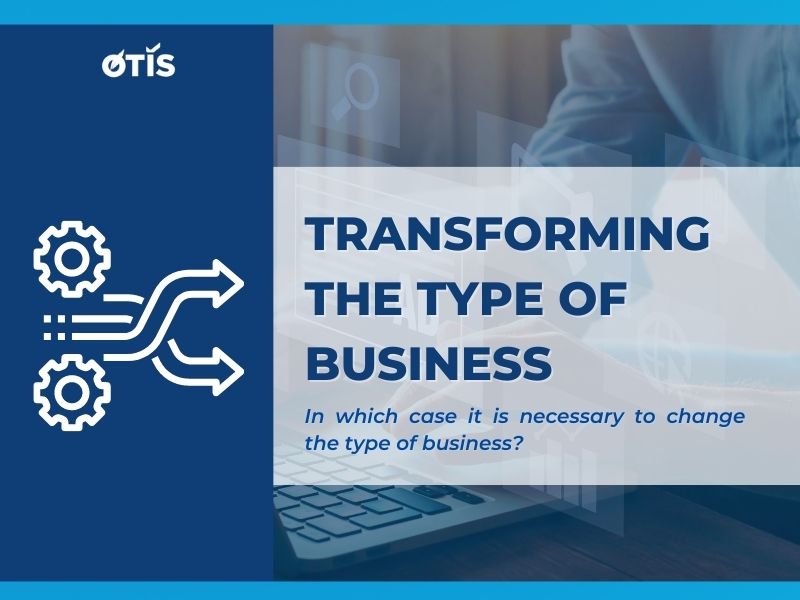During the operation of the enterprise, the enterprise can reorganize the enterprise to suit the development situation of the company. So what is business reorganization? What forms of enterprise reorganization are prescribed by the enterprise law? Find out with OTIS LAWYERS in the article below!
Legal grounds
Enterprise Law 2020
What is business reorganization?
In Vietnamese enterprise law, business reorganization is understood as an enterprise restructuring activity taking place within an enterprise or between several enterprises, including division, separation, consolidation, merger and transformation of enterprise.
Characteristics of business reorganization
- Regarding the object: the reorganized object is an enterprise, including an enterprise before and after the reorganization takes place, collectively referred to as a reorganized enterprise.
- In terms of nature: enterprise reorganization is an activity that can change the legal status and business scale of an enterprise.
- Regarding legal consequences: enterprise reorganization is an activity that takes place within the related enterprises and has little impact on the rights and obligations of partners due to the mechanism of transferring legal rights and obligations to the enterprise. after reorganization.
- Regarding the form of implementation of reorganization: Enterprise reorganization takes place in various forms, including: division, separation, consolidation, merger and transformation of enterprises.
Types of business reorganization

Company division
Company division is a form of business reorganization whereby an enterprise is divided into 2 or more new enterprises and the existence of the divided enterprise ceases. The rights and obligations of the divided enterprise are transferred from the divided enterprise to the new enterprises.
Separation of companies
Separation of companies is a form of corporate reorganization whereby an enterprise is split into two or more enterprises without terminating the existence of the separated enterprise.
When separating an enterprise, at least one new enterprise will be born, existing in parallel with the separated enterprise. Separation of enterprises leads to a reduction in the size of the separated enterprise because a part of capital, assets and members has been transferred to the separated enterprise.
Company consolidation
Company consolidation (enterprise consolidation) is understood as two or more enterprises combining to form a new enterprise by transferring all assets, property rights and obligations to the new enterprise and terminating its existence. in old businesses – businesses that are consolidated.
Company merger
Company merger (enterprise merger) is understood as one or several businesses that can be merged into another enterprise by transferring all legal assets, rights, obligations, and interests to the enterprise. acquire the merger, and at the same time terminate the existence of the merged enterprise.
Transforming the type of business
Currently, according to the provisions of the Enterprise Law 2020, there are 4 cases of business transformation, including:

Converting a limited company into a joint stock company
A limited liability company may be converted into a joint stock company by the following methods:
– Converting into a joint-stock company without mobilizing other organizations and individuals to contribute capital, not selling contributed capital to other organizations or individuals;
– Converting into a joint stock company by mobilizing other organizations and individuals to contribute capital;
– Converting into a joint stock company by selling all or part of the contributed capital to one or several other organizations and individuals;
– Combine the above 3 methods and other methods.
Converting joint stock company into one member limited company
A joint-stock company may be converted into a one-member limited liability company by the following methods:
– One shareholder receives the transfer of all the respective shares of all other shareholders;
– An organization or individual who is not a shareholder receives the transfer of all shares of all shareholders of the company;
– The company has only 1 shareholder left.
Converting a joint stock company into a limited liability company with two or more members
A joint-stock company may be converted into a limited liability company with two or more members by the following methods:
– Converting into a limited liability company with two or more members without raising more shares or transferring shares to other organizations or individuals;
– Converting into a limited liability company with two or more members and at the same time mobilizing other organizations and individuals to contribute capital;
– Converting into a limited liability company with two or more members and concurrently transferring all or part of shares to other organizations or individuals to contribute capital;
– The company has only 2 shareholders left;
– Combination of the above methods and other methods.
Converting a private enterprise into a limited company, joint stock company, partnership company
A private enterprise may be converted into a limited liability company, joint stock company or partnership under the decision of the owner of the private business if it fully meets the following conditions:
– The converted enterprise must fully satisfy the conditions specified in Clause 1, Article 27 of the Law on Enterprises 2020;
– The owner of a private business commits in writing to be personally responsible with all his/her assets for all unpaid debts and commits to pay the full amount of the debt when it is due;
– The owner of the private enterprise has a written agreement with the parties of the contract that has not been liquidated on the receipt and continued performance of such contracts by the converted company;
The owner of a private enterprise shall commit in writing or have a written agreement with other capital contributors on the receipt and use of existing labor of the private enterprise.
Above is our advice on business reorganization. We hope that this will be a useful reference for readers who want to learn the legal provisions of the business sector.
OTIS LAWYERS. Business consulting service
OTIS LAWYERS is always proud to be a professional unit in the field of business consulting. With a team of highly qualified lawyers, extensive experience and dedication to clients, we believe that we will provide you with the best, most professional service, reasonable cost and time. complete the process as quickly as possible. We commit that all customer information is absolutely confidential and customer interests always come first.
For any questions or comments, please contact:
OTIS AND PARTNERS LAW FIRM
Office address: K28 – Group K, Lane 68 Trung Kinh, Yen Hoa Ward, Cau Giay District, Hanoi
Email: info@otislawyers.vn
Hotline: 0987748111


 Tiếng Việt
Tiếng Việt 한국어
한국어 中文 (中国)
中文 (中国)